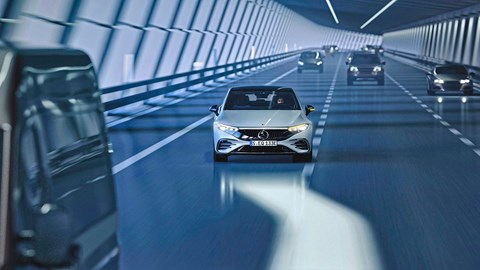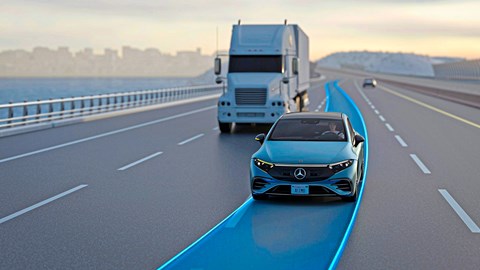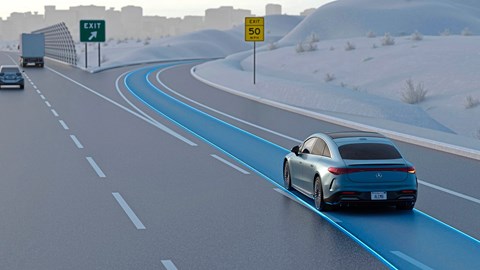► Allows for seamless lane changes between 49 and 87mph
► ALC ensures correct lane positioning for junctions
► In top models only, as you’d expect
Mercedes seems determined to go right up to the limits of what’s legal when it comes to automated driving. There’s more tech waiting in the wings while legislation is agreed, but right now cars can be installed with a new feature for Merc’s semi-autonomous driver-assistance. It’s called Automatic Lane Change (ALC), and that’s what it does.
If you specify a C-Class, E-Class, S-Class or any electric EQ model with Merc’s Active Distance Assist and Active Steering Assist in its Distronic cruise control, ALC is included. It’s been available for a while in the US and Canada, and now it’s arriving in Europe.

Previously, sophisticated adaptive cruise systems have had the ability to change lane but needed prompting by the driver, usually by tapping the indicator stalk. With ALC, the car makes its own decisions. Example: if you’re on the motorway with Distronic set to 70mph and you’re catching a slower-moving vehicle, the car will use all its available sensor data to check its surroundings and will change lane when conditions allow.
The technology is integrated into the adaptive cruise system, so there’s no need to specifically switch ALC on, and it works between 49 and 87mph. As well as activating the indicator itself, the car will bong and light up an icon in the instrument cluster so you’re in no doubt about its actions.
ALC also integrates into other parts of the car. For example, cars with Digital Light matrix LED headlights fitted will beam a guiding line from one lane to the other. Have a route planned? ALC will ensure you’re in the correct lane at junctions.

We tested it on a new-generation Mercedes E-Class in Germany. There’s no sign that the technology is active at first, but it springs into life as you approach slow-moving traffic. Lane discipline is exemplary, switching to the inside when there’s enough space to do so but holding off if it sees another slow vehicle in the middle distance.
The lane changes themselves were all smooth during our test. Indication starts a reasonable time before the act of actually changing lanes begins, to allow other motorists to see you and to give you an opportunity to override the car’s impending decision. It makes well-judged decisions and delivers smooth results. Impressive, and more than a little uncanny.
In the loop
The car gives a visual prompt in the instrument cluster as well as a bong when it’s initiating a lane change. Holding the wheel is recommended but inessential.
Light the way
ALC works with Digital Light tech so a light beam points from the lane you’re in to the one you’re moving into, making your intentions clearer after dark.

Slip road switches
Working with the nav, ALC will prepare you for junctions and slip roads by moving into the appropriate lane. It adjusts its speed for smooth transitions.
Does it work?
Yes. Frankly, it’s surreal how well it worked during our real-world test. Its decision-making processes are well-judged, lane changes are smooth and its integration with other features of the car only make you want to use it more.